The majority of moths are active at night therefore most of us never see them. That's a shame because, closely related to butterflies, they can easily rival their daytime cousins in beauty and fascinating behaviour.
In our expert guide to British moths, we take a look at how to identify some of the most common and spectacular species, where they live, what they eat and the difference between a moth and a butterfly. We also investigate why moths are important to the ecosystem and the best plants for attracting them to your garden.
Learn more about Britain's fascinating insect species with our guides to bees, butterflies, grasshoppers and insects that bite or sting.
Discover more British wildlife
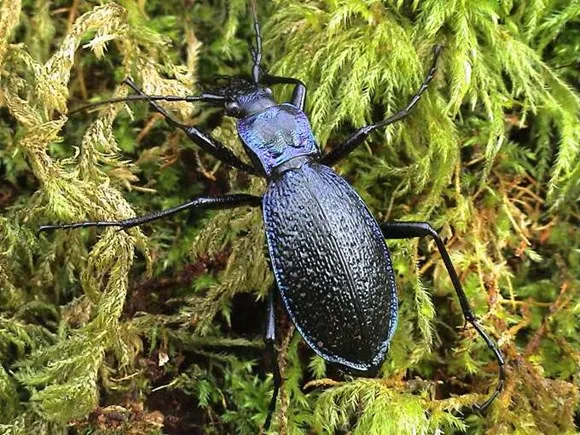
What is the difference between a butterfly and a moth?
Butterflies and moths are closely related and some moths are as large and colourful as butterflies, making it difficult to tell them apart.
A quick way to tell the difference is to look at their antennae: butterflies have clubbed antennae (bulbous at the tips) whereas moths, with the exception of the burnets, do not.
Moths are also far more numerous than butterflies; compare the 59 species of butterflies breeding in Britain with some 900 species of large moths (known as macro-moths) and a further 1,550 or so species of micro-moths.
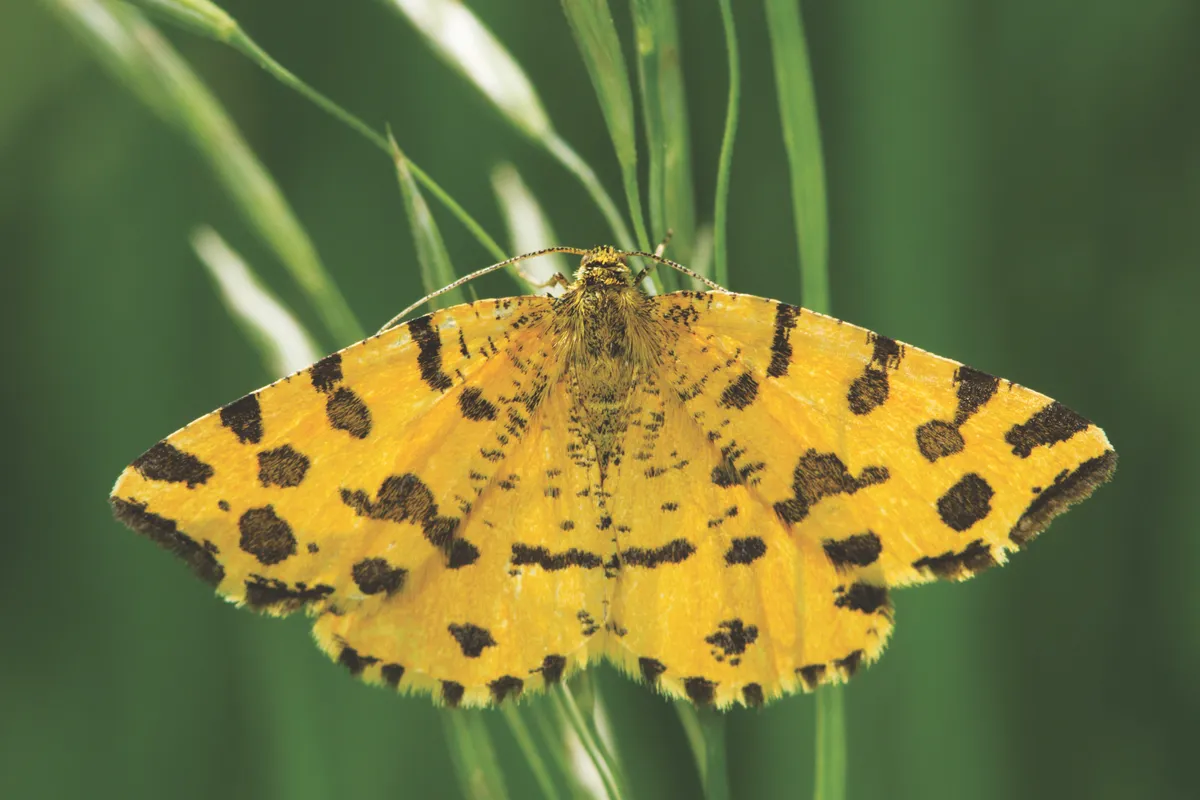
What do moths eat?
Single flowers are chosen for their easily accessed nectar, giving adult moths energy for flying and aiming to provide a year-round food supply. Some moths even fly in winter, with ivy flowers providing a late-season feast. If you make your garden the meeting of several different habitats – woodland, fields and river – it will be especially rich in insect life.
Moth caterpillars feed on the leaves and roots of native plants and grasses, so leave meadow fringes around the garden walls. Grow foxglove, primrose, mullein and thyme in the borders, or cultivate varieties that are related to native species: verbascum, purple plantain, honeysuckle and flag iris. Native trees are especially important and the caterpillars that eat their leaves provide food for birds. Birds feed their chicks with winter moth caterpillars collected from the tree canopy; a single brood of blue tits can eat up to 10,000, their breeding timed to coincide with the emerging larvae.
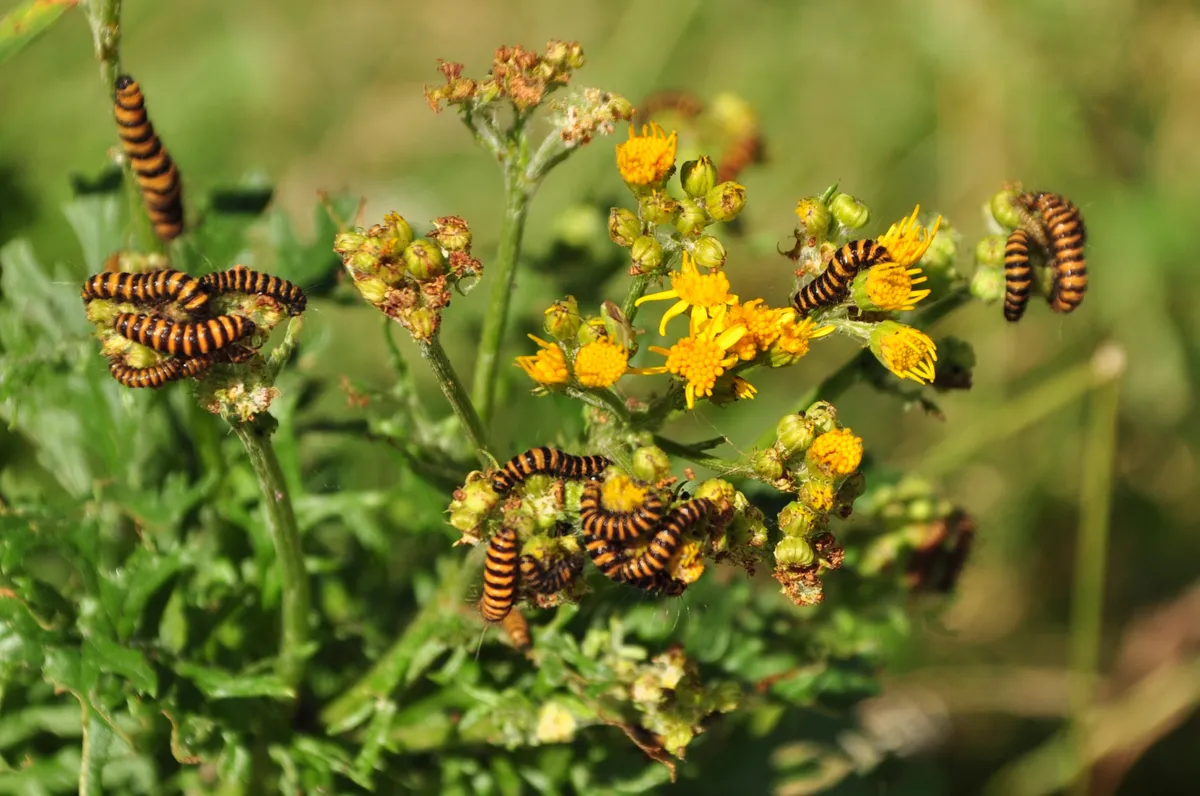
Moths and mimicry
Moths often use mimicry to protect themselves. Red sword-grass looks like a sliver of wood and has a head like a shaven pencil, only recognisable as an insect when it splays its legs to walk on your hand. Chinese character is a white moth with brown blotches that looks just like a bird dropping. The beautiful buff-tip mimics a broken-off birch twig.
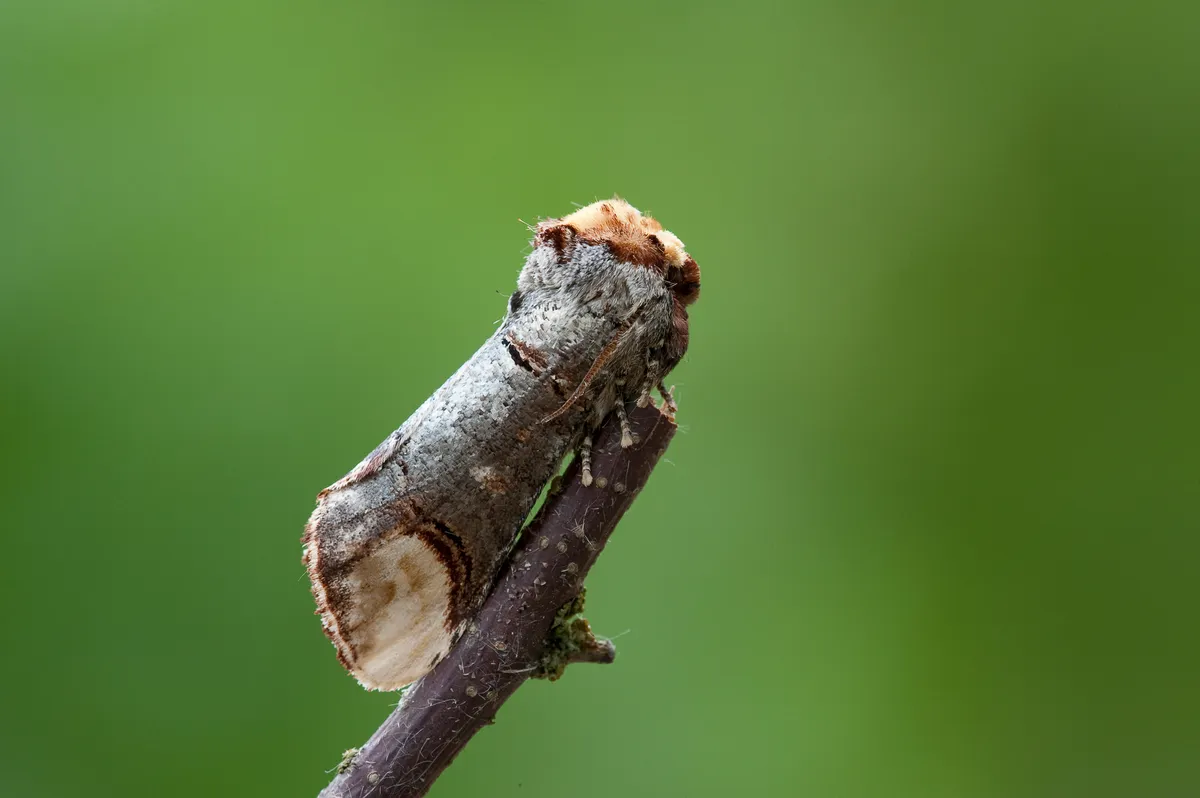
Where do moths get their names?
Their imaginative names are a joy. Thought up by Victorian naturalists, these were often drawn from life in the ‘big house’; there are ermines, satins, brocades, footmen and wainscots. Some names come from their markings: Hebrew character, garden tiger, feathered gothic, speckled yellow, blood-vein and leopard moth. Angle shades is a perfection of symmetry and herald wears the rich velvet of a medieval costume.
How long do moths live for?
Moths are relatively short-lived, but longevity depends on species. For most species, the caterpillar stage of the lifecycle can be weeks or even months while the final adult stage could be as short as a few days. Some moth species hibernate over the winter as adults.
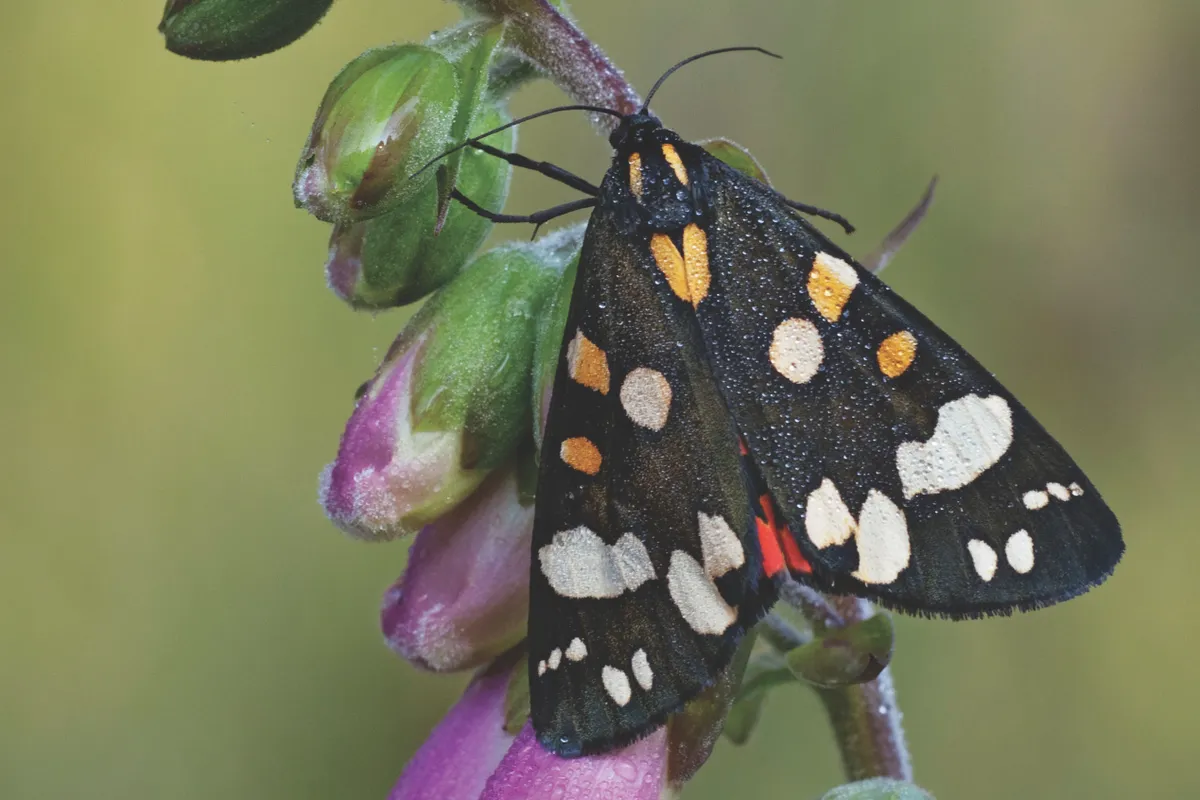
Why are moths important?
As well as being important pollinators for flowers and crops, moths play a vital in the food chain. They are relied on for food by birds, spiders, bats, amphibians and hedgehogs. Their declining numbers – down by 40% in the south of the UK – is alarming and is having an impact on other species.
20 types of UK moth
Large yellow underwing (Noctua pronuba)
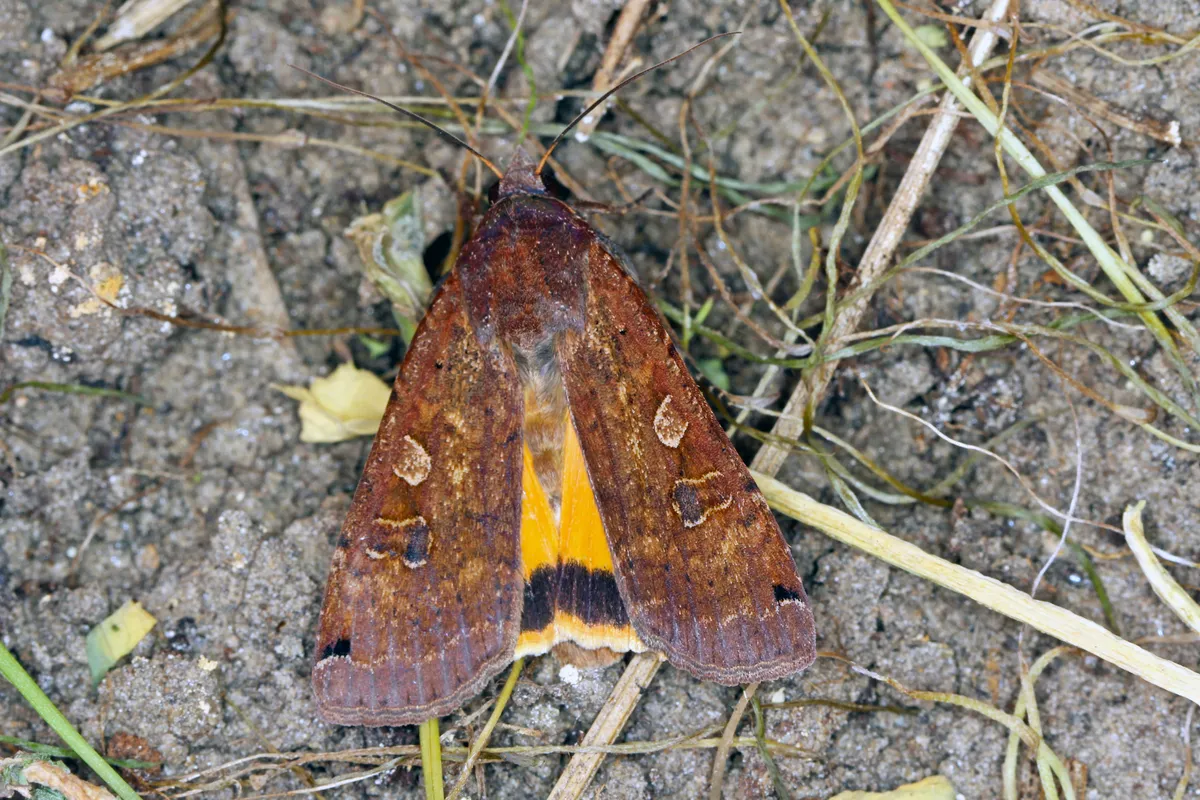
The common lawnmower moth, which hurtles away when we mow our lawns, before crash-landing. Occurs throughout the summer, often alongside its close cousin the broad-bordered yellow underwing (primarily a, August woodland moth). Distinctive yellow hindwings. Breeds on a variety of low plants, including grasses.
Common wainscot (Mythimna pallens)
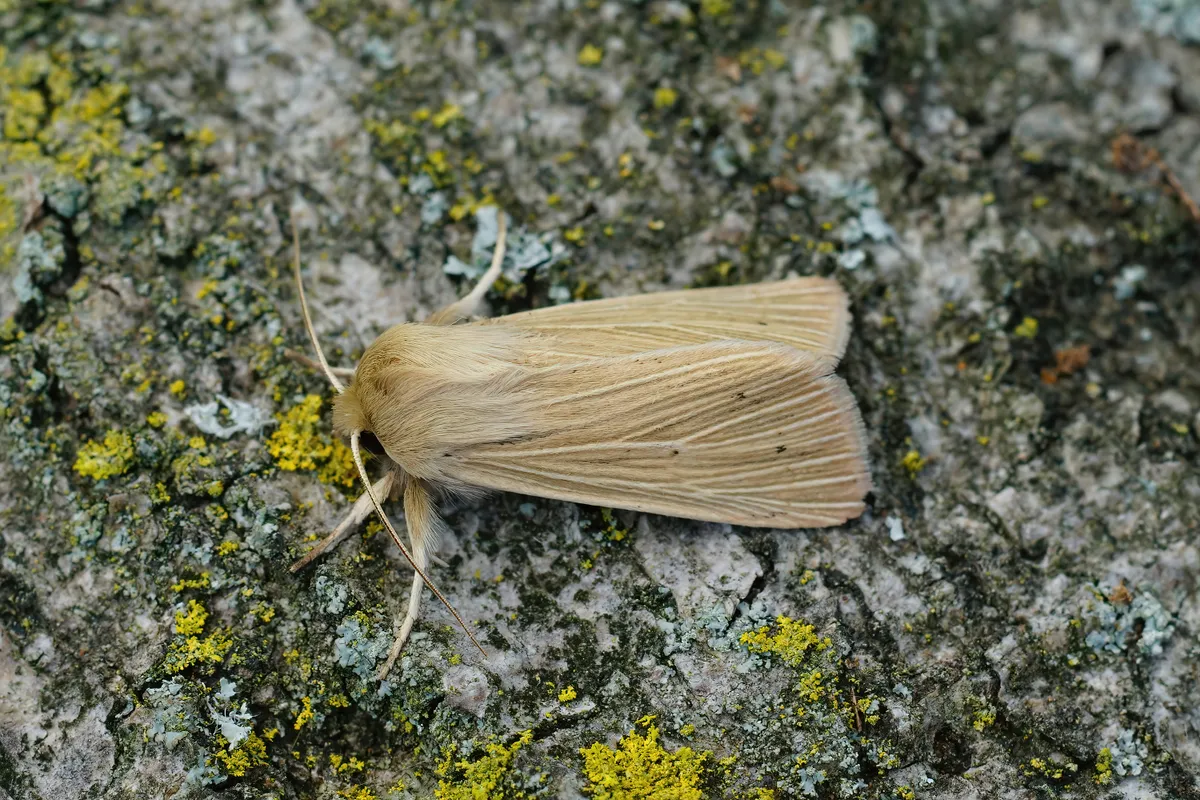
The commonest of a group of moths that appear pure-white when caught in car headlights on summer nights. Most numerous during July and August. One of the commonest moths in and around gardens, visiting buddleia flowers at night. Larvae feed on various grasses.
Hummingbird hawk-moth (Macroglossum stellatarum)
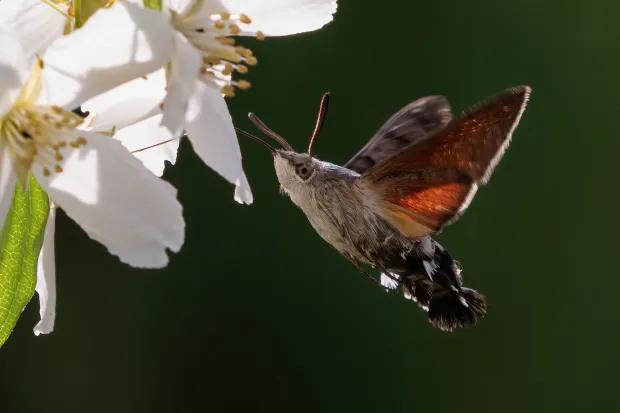
This aptly-named day-flying moth looks like a small hummingbird, hovering to feed with a probing tongue on flowers. Its presence is regarded as a good omen. Primarily a migrant here, we are seeing more and more of them: 2022 was a great ‘Hummingbird Summer’. May now be hibernating in the South West. Breeds on bedstraws.
Elephant Hawk-moth (Deilephila elpenor)
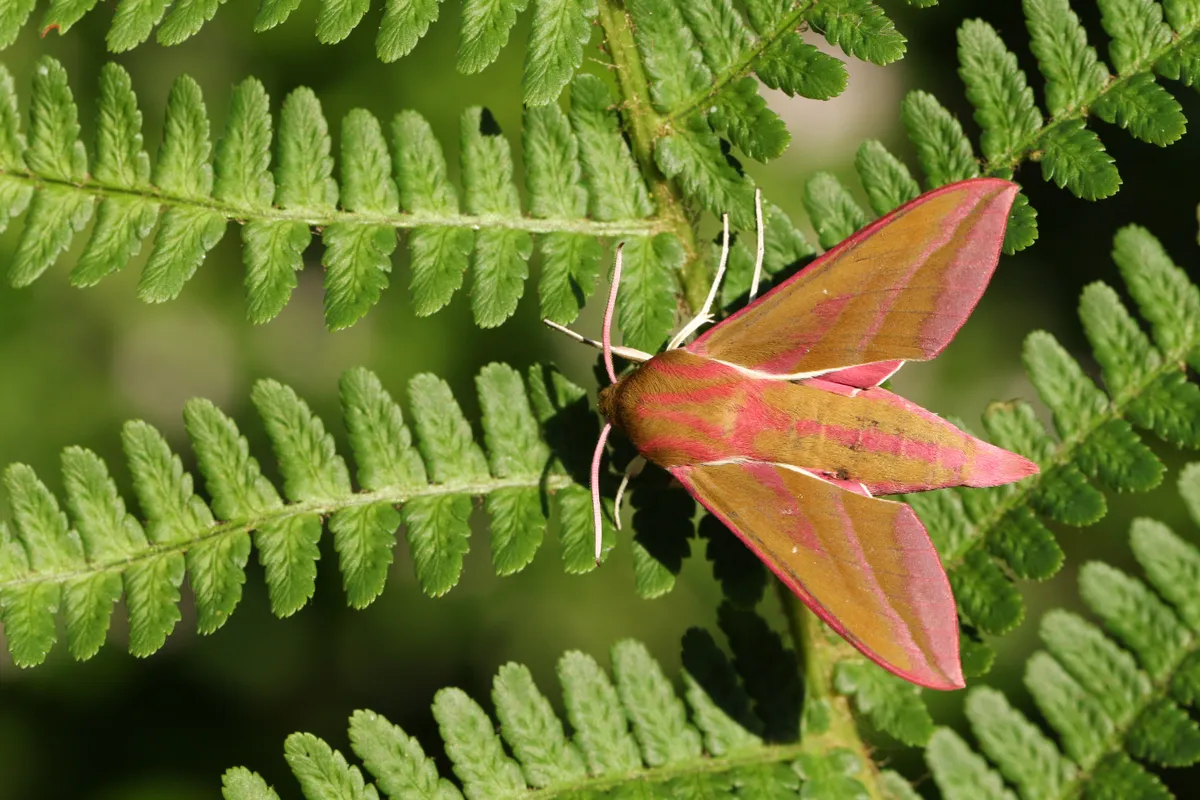
A large and distinctive pink and greenish moth, with a smaller, pinker and more local cousin (the small elephant hawk-moth). It is becoming increasingly common and is spreading north, flying from early to late summer, visiting honeysuckle flowers at dusk. The false-eyed, snake-like larvae feed mainly on willowherbs and garden fuchsias.
Jersey tiger (Euplagia quadripunctaria)
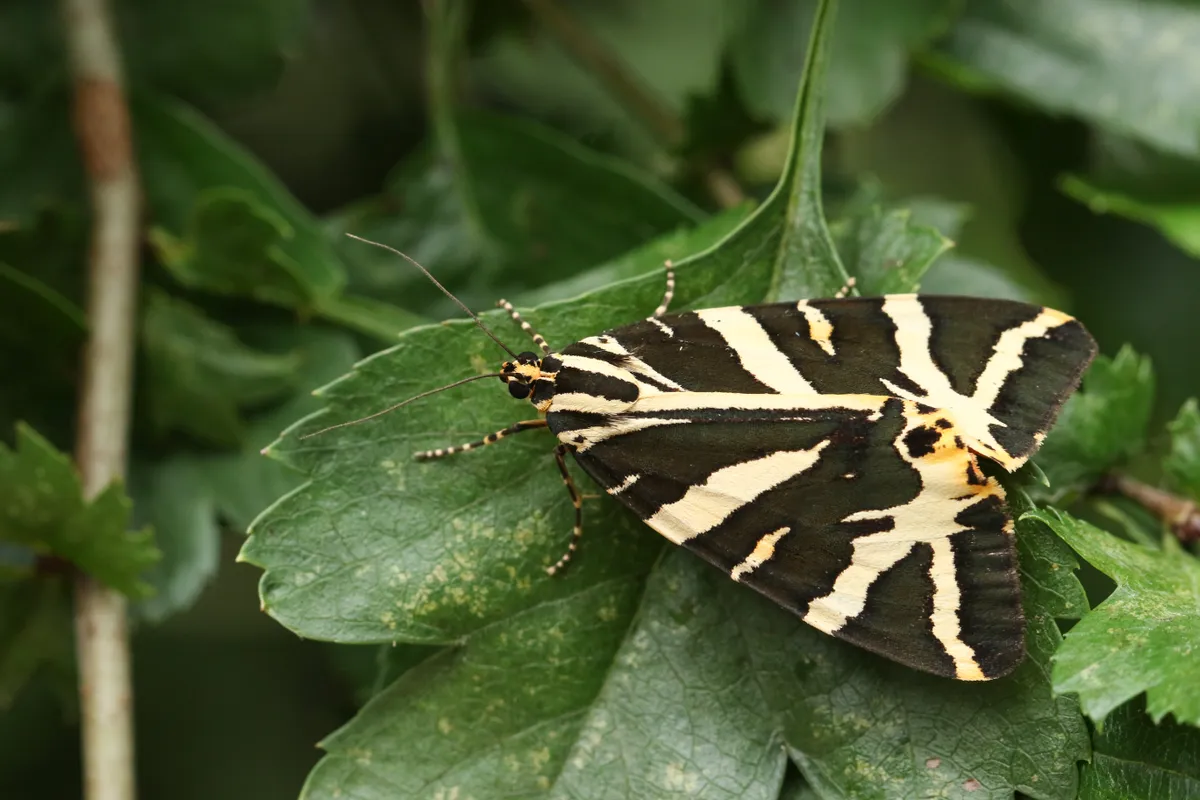
An even good news story: another exotic-looking day-flying moth that is increasingly strong in southern Britain, and moving north. It is now numerous in the London area and along the Thames valley during later summer. The combination of striped forewings and orange or yellow hindwings is distinctive. Breeds on many tough plants, including nettles.
Cinnabar (Tyria jacobaeae)
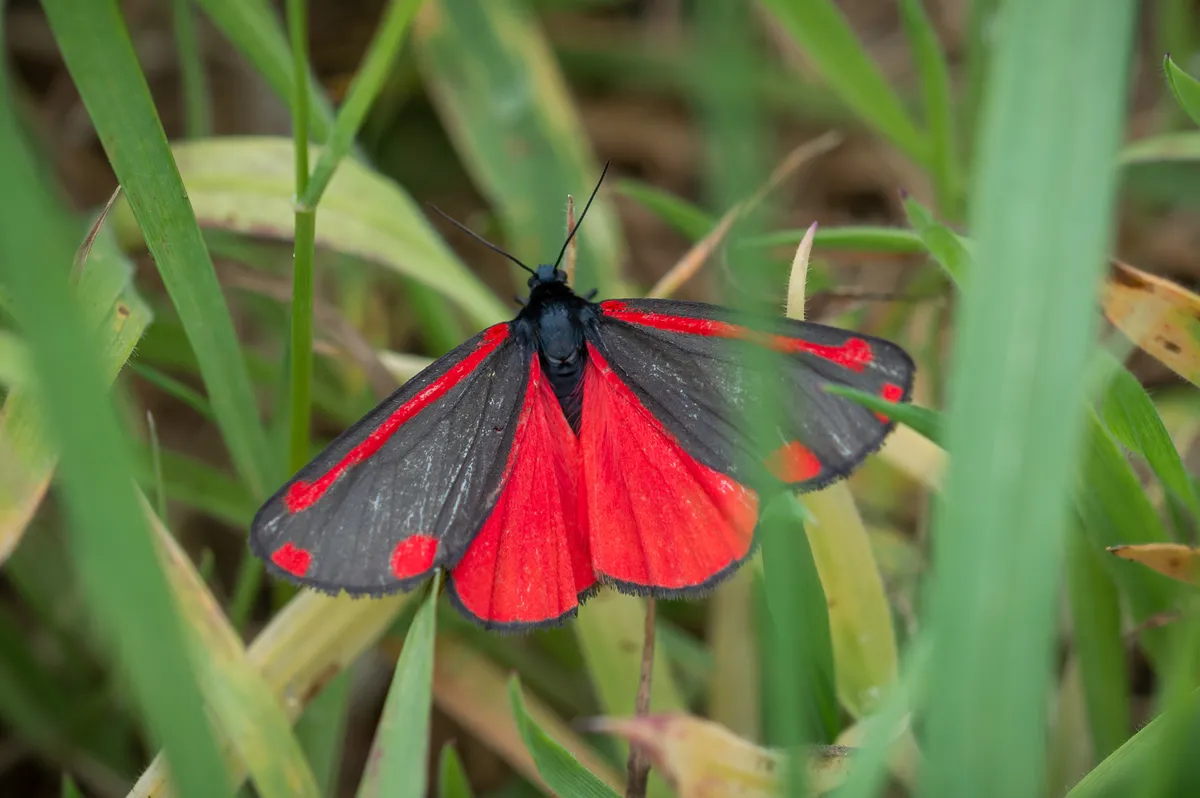
A widespread and reasonably distinctive black and scarlet moth, flying from spring to late summer, including by day. The yellow and black ‘stripey jumper’ caterpillars defoliate common ragwort and similar plants. However, numbers vary greatly from year to year, and the moth is commonest in dry sandy places.
Mint moth (Pyrausta aurata)
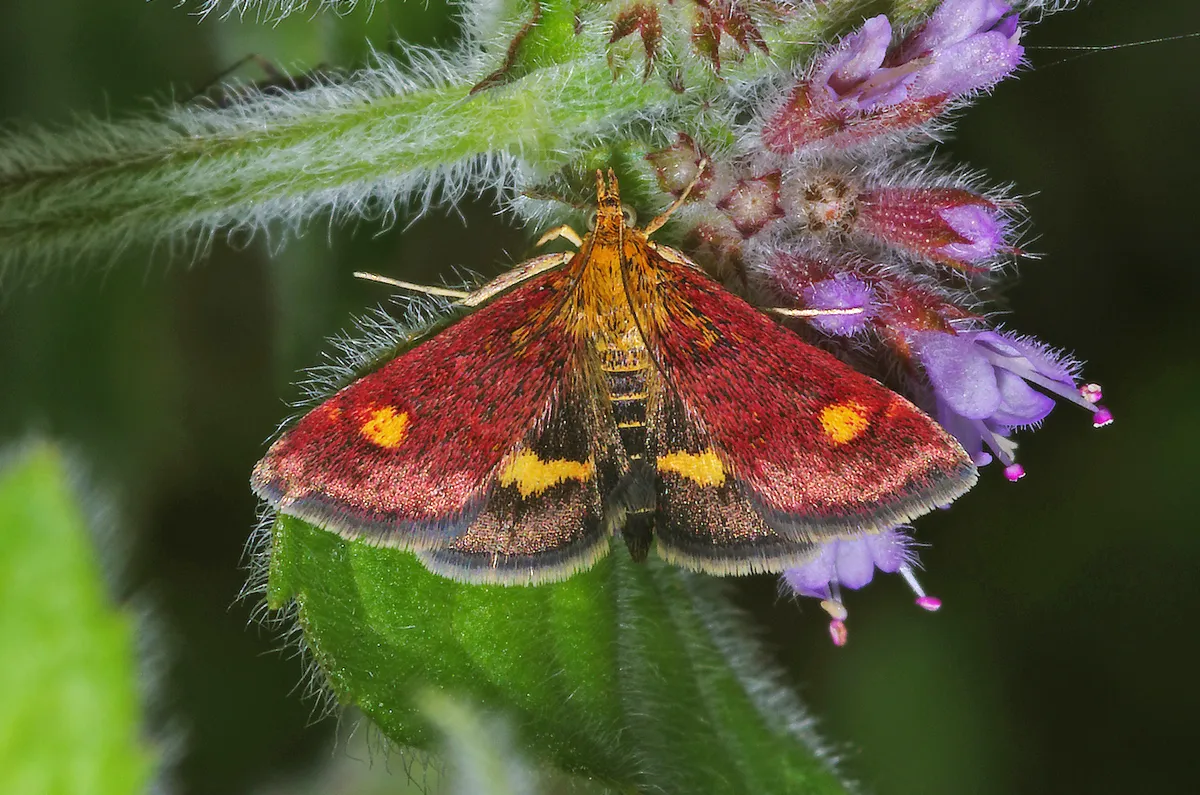
Has increased to become a familiar diminutive moth, with aubergine forewings punctuated by a prominent gold spot, and darker, yellow-barred hindwings. Flies by day from spring to September, favouring gardens, marshes and limestone grassland. The larvae feed on mints, marjoram and thymes. There are some closely-related but scarcer species.
Box moth (Cydalima perspectalis)
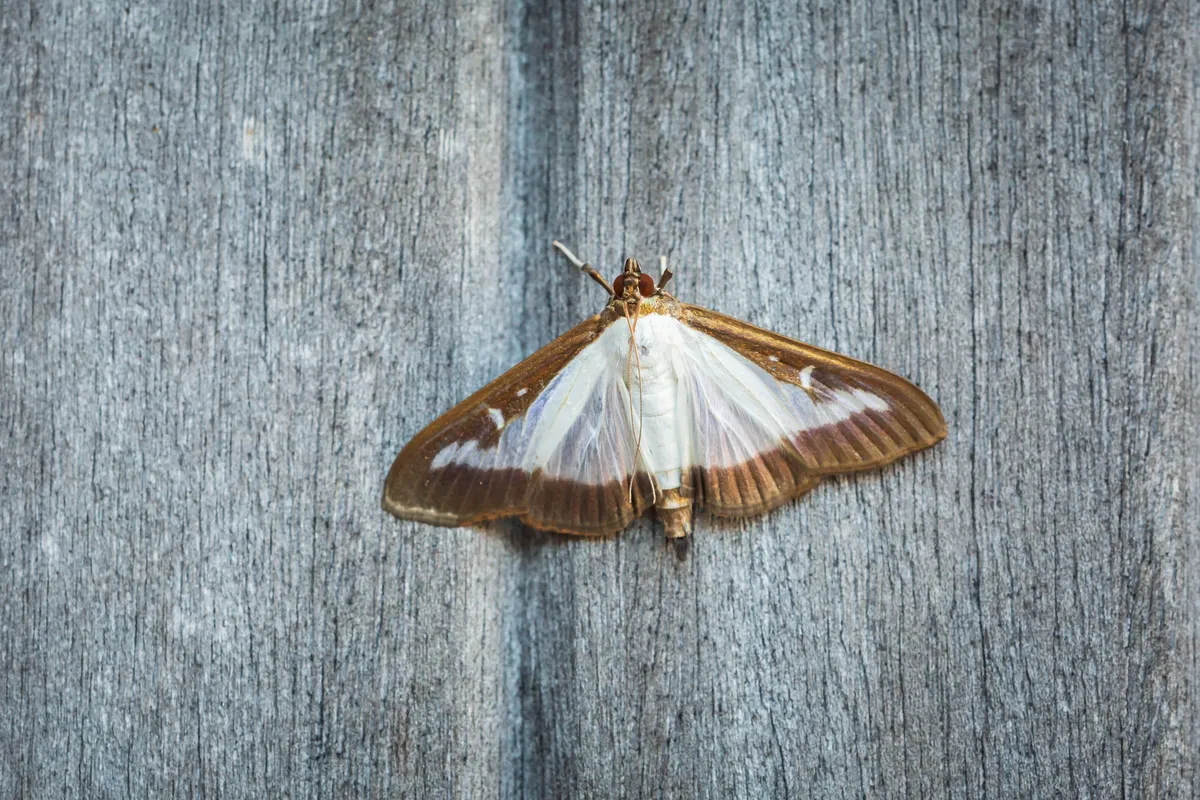
This distinctive black-bordered moth is spreading throughout much of Britain, assisted by the transportation of box bushes hosting eggs and larvae. The larvae can denude native and garden box, though there is growing evidence that birds will consume them. Two broods, mainly in high summer. Box blight (fungal infection) is another problem.
Scarlet tiger (Callimorpha dominula)
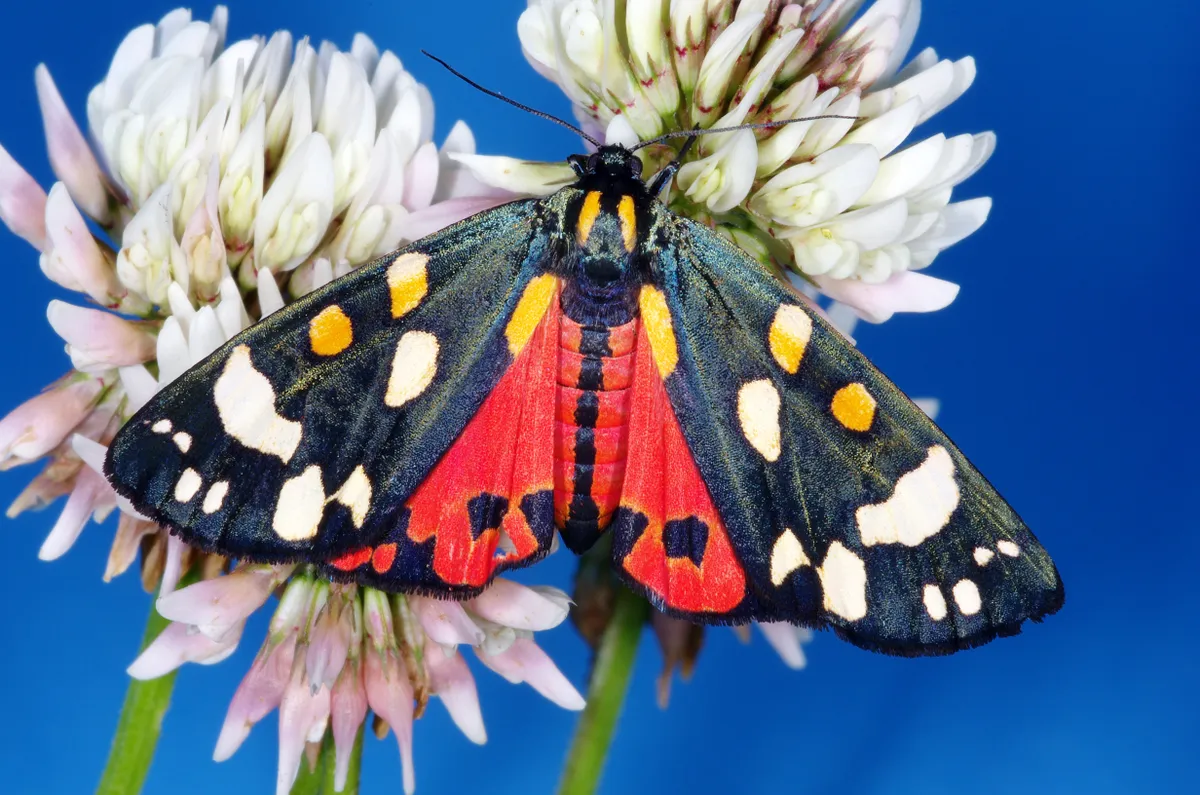
The day-flying scarlet tiger flashes its dramatic underwings as a warning to predators that it’s poisonous. The caterpillars, known as ‘woolly bears’, have irritant hairs and are only eaten by cuckoos. A former rarity that is increasing spectacularly, benefiting from climate change. It now occurs over much of southern Britain, in town and country, especially around river valleys where comfrey, the larvae’s favourite foodplant grows. The males patrol 2-4m up, looking for females, on warm midsummer afternoons and evenings, even along city streets.
Poplar hawk-moth (Laothoe populi)
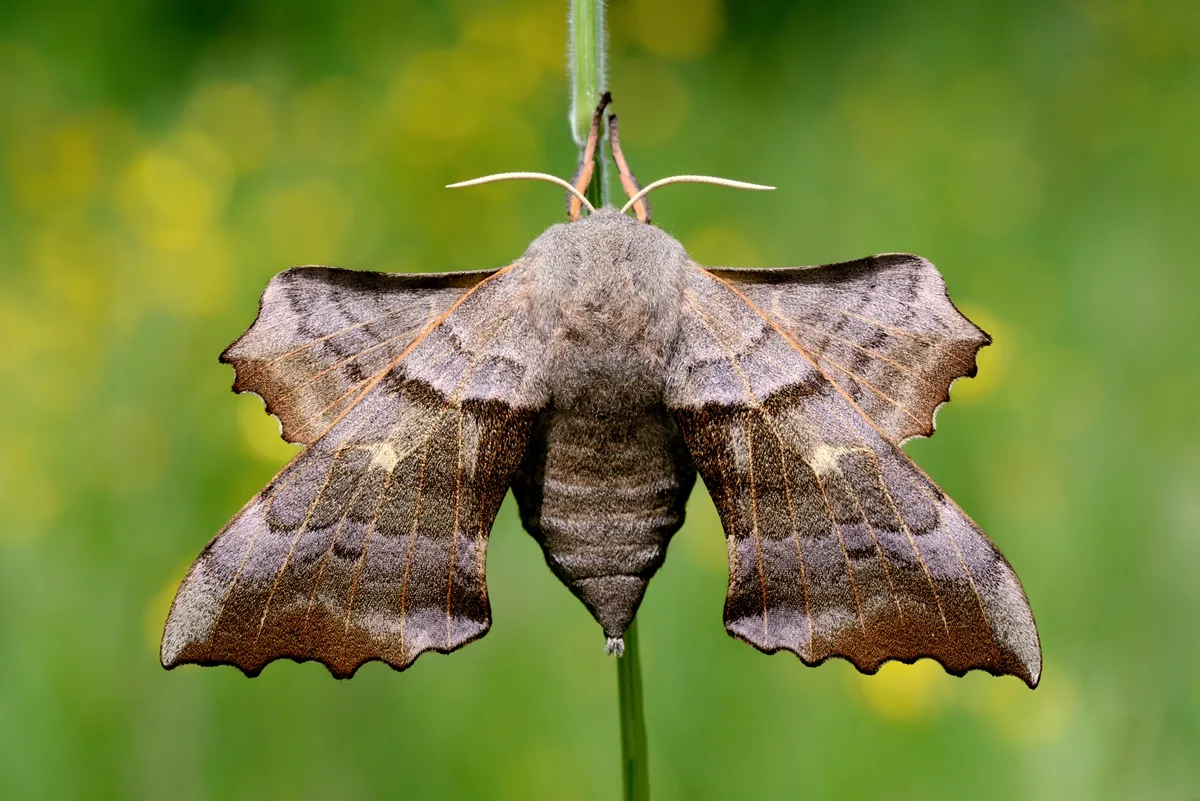
Resting with its hind wings projected forwards, the poplar hawk-moth has a sculptural outline. Hold one on your palm and it takes several minutes of vibrating its wings before it can fly.
Large emerald (Geometra papilionaria)
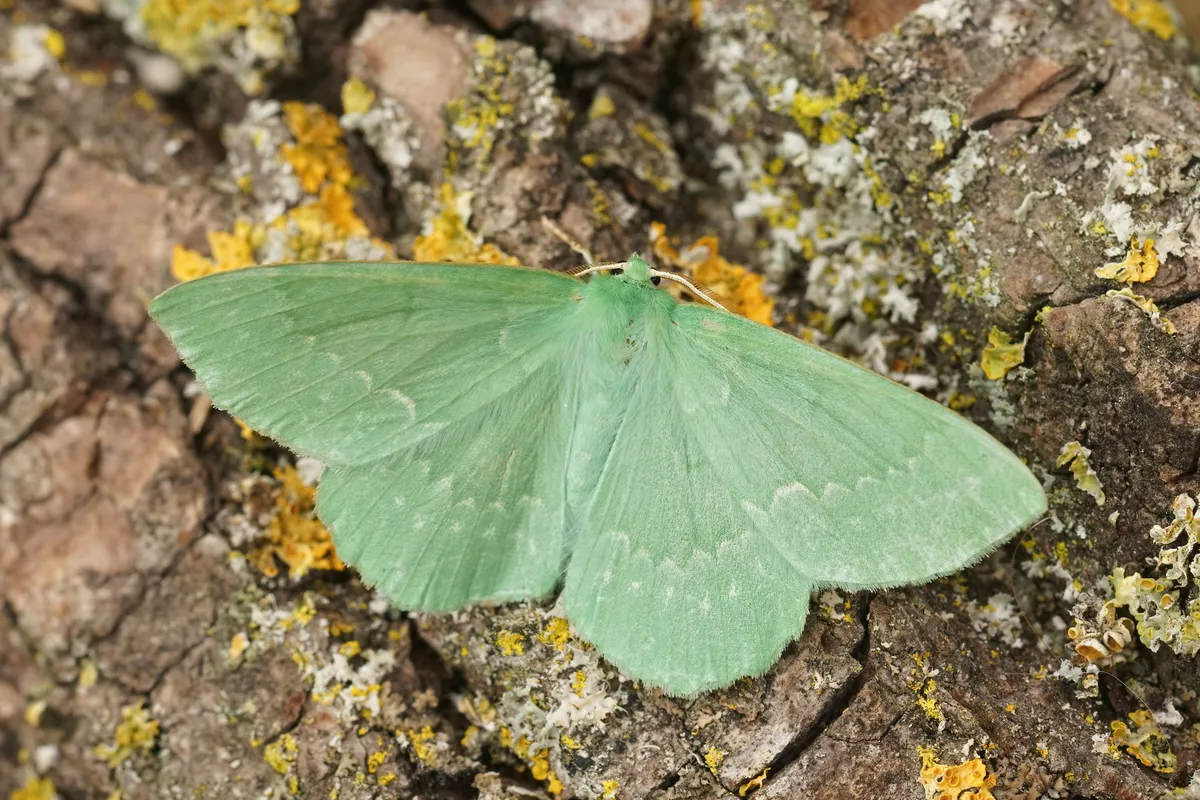
Every bit as colourful and large as a butterfly, this beautiful jade-green moth has delicately scalloped wings. It rests like a butterfly, too, with its wings spread out.
Merveille du Jour (Griposia aprilina)
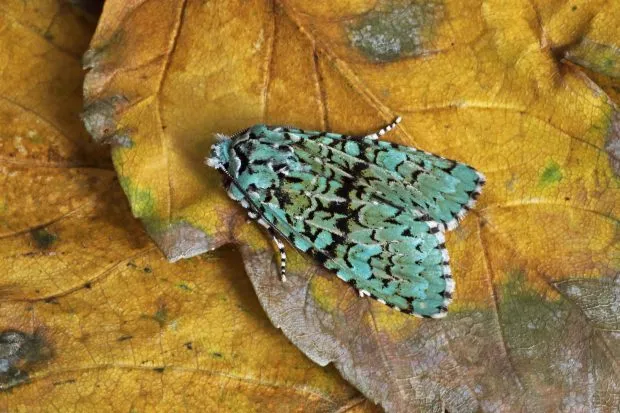
Flying in autumn, the fabulous merveille du jour really lives up to its name. Wings are frosted green with sharply patterned black-and-white markings, camouflaged when seen against lichen.
Silver Y (Autographa gamma)
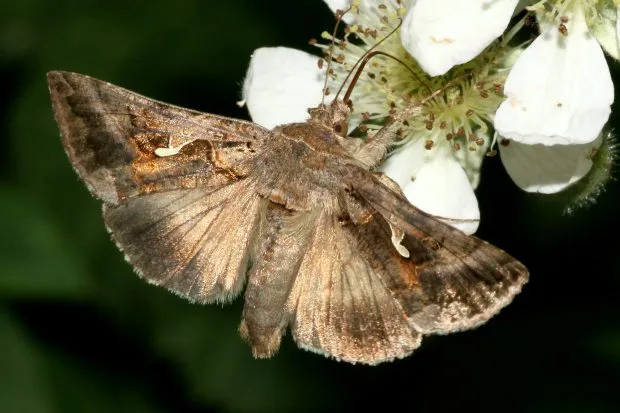
One of our commonest immigrant moths, which may be seen throughout the year. Flies readily by day, scurrying frantically low over herbage, before crashing randomly. Migrants are often worn, and the normally distinctive silver Y can be misshaped or discoloured. Often accompanies invasions of other insects from across The Channel. When they settle, you can clearly see a white Y shape on their forewings.
Angle shades (Phlogophora meticulosa)
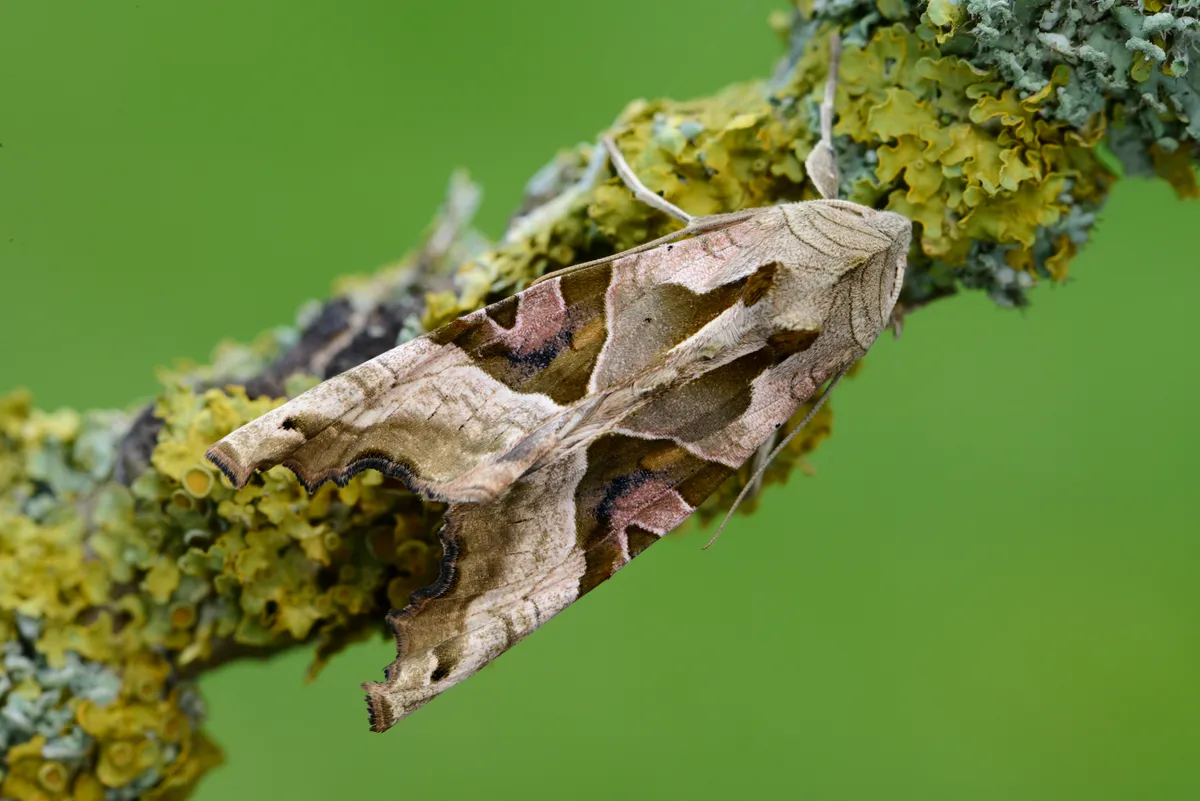
Camouflaged to look like a crumpled dead leaf, angle shades has pinkish brown markings on creased and folded wings. Often seen in gardens by day, it’s the moth that first got me hooked.
Buff-tip (Phalera bucephala)
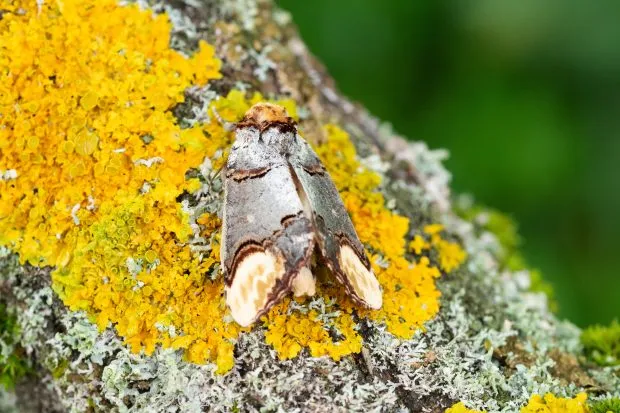
Unmistakable. The ultimate mimic, perfectly mimicking a broken birch twig when at rest, with wings tucked down closely over the body. Mottled silver-grey wings resemble birch bark while dark edging lines emphasise buff patches, the colour of pale wood. Finding this moth at rest is an essential childhood experience. A common high summer moth, whose larvae feed gregariously on various trees and shrubs.
Emperor moth (Saturnia pavonia)
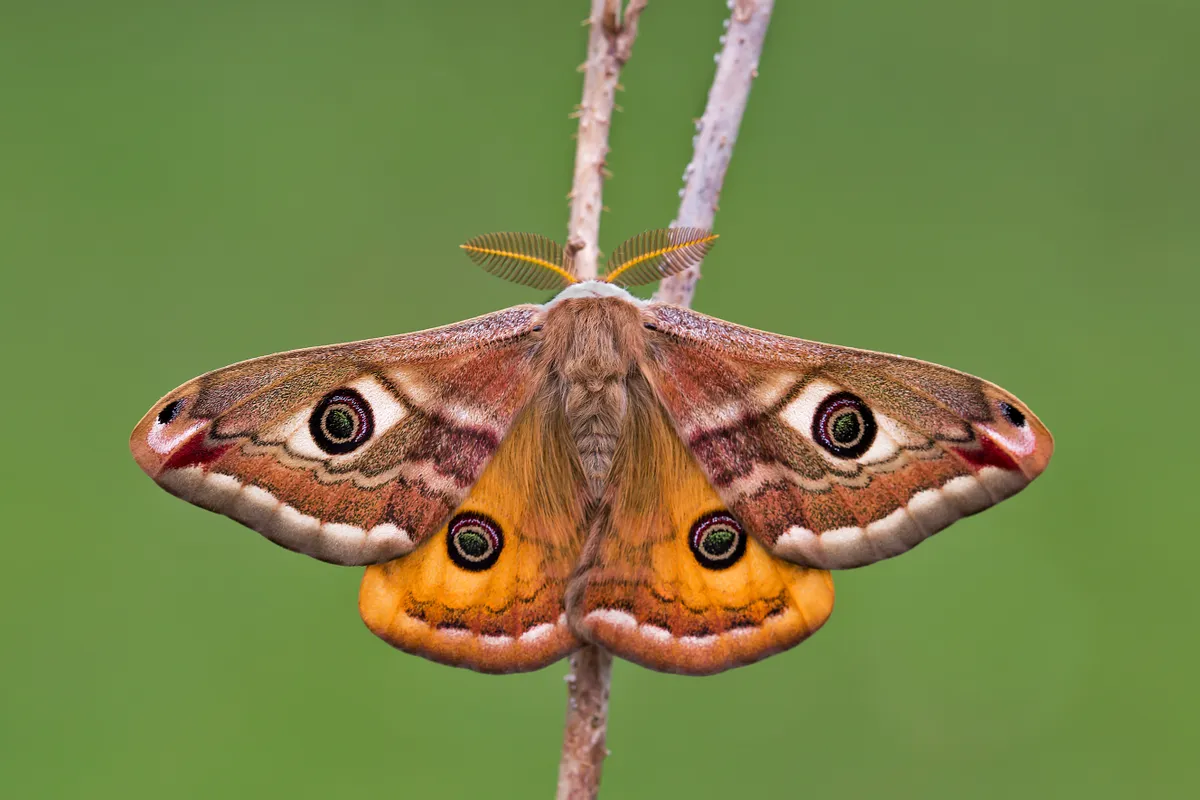
Emperor moths have four large eye spots to deter birds. Males can detect the scent of females from several kilometres away; you can buy pheromone lures to attract this spectacular species.
December moth (Poecilocampa populi)
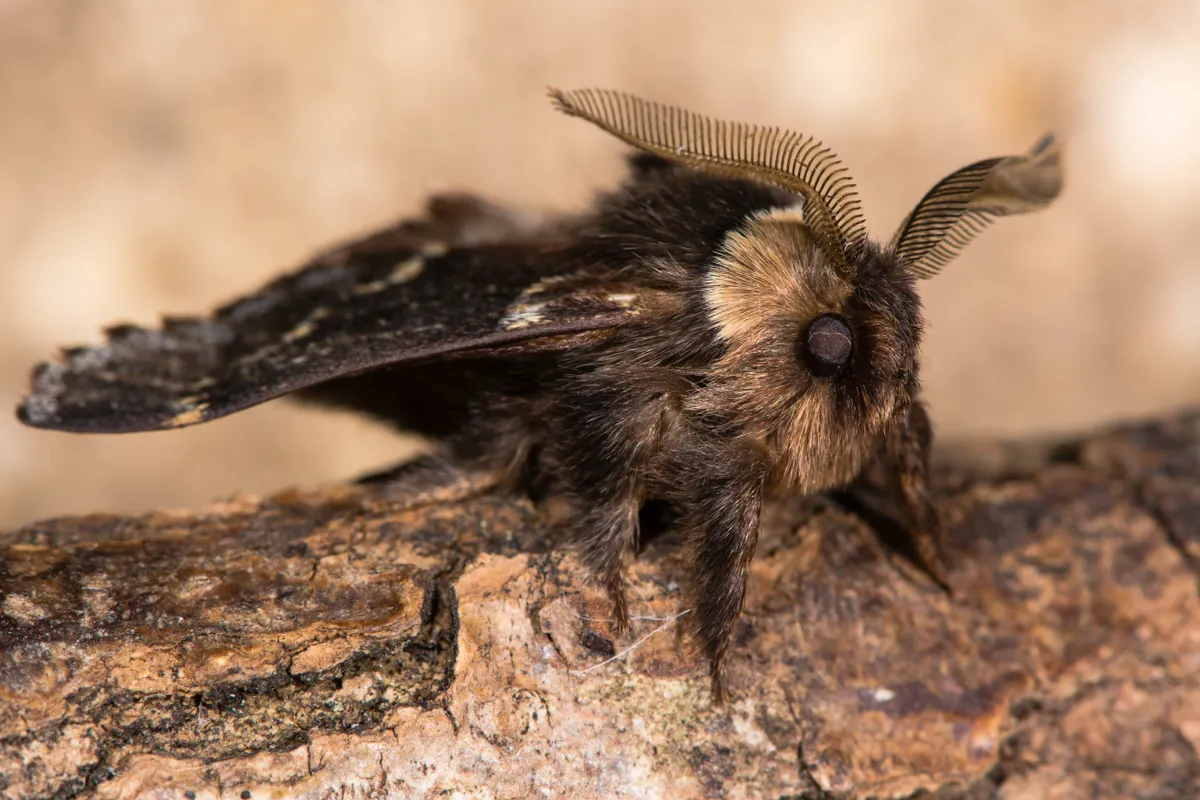
Flying in the middle of winter, the charcoal-coloured December moth looks like it’s wearing a furry hat and warm clothing. Males, though smaller than the females, have impressive feathered antennae.
Buff arches (Habrosyne pyritoides)
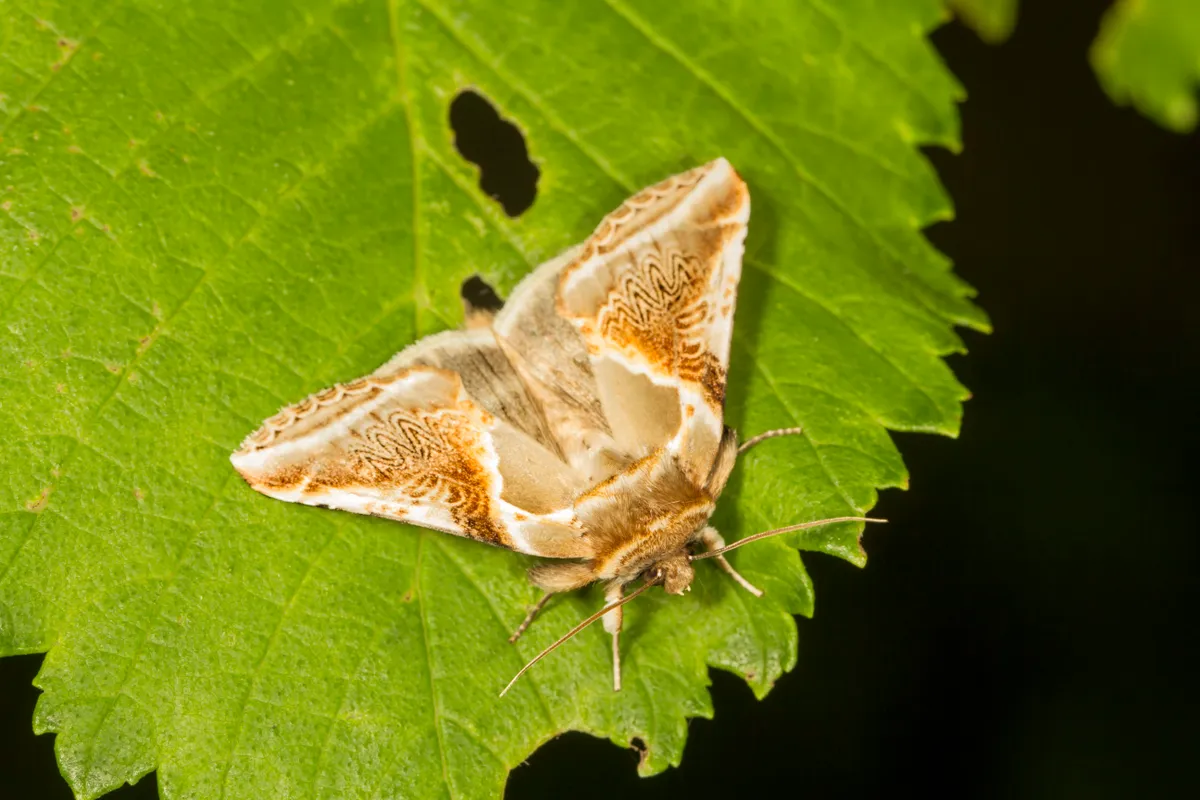
This extraordinary moth sports a combination of smooth grey wings overlaid with orange-brown wavy markings that distort the sense of space like a piece of 1960s psychedelia.
Winter moth (Operophtera brumata)
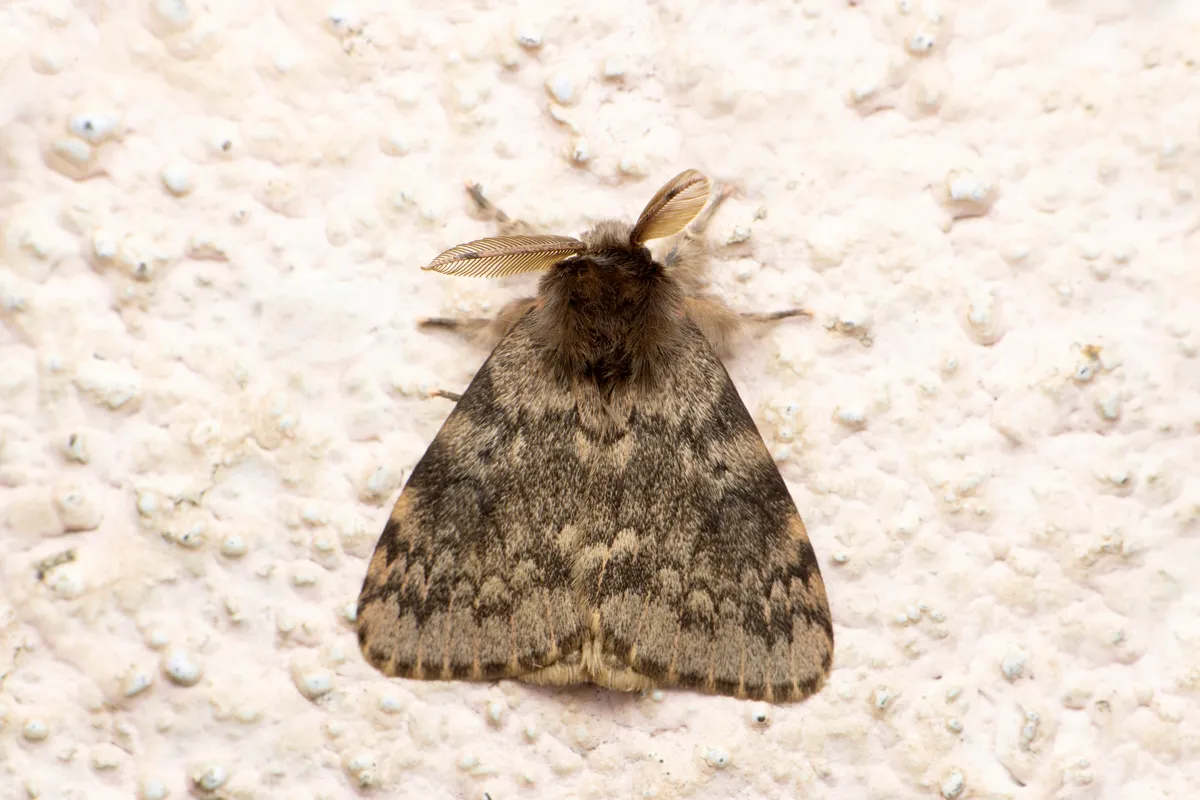
A tiny, ghost-like moth that flutters along lanes on early winter evenings, and is attracted to car headlights. We only see the males, as the females are flightless. Larvae breed on various trees and shrubs. There are several similar-looking species, which do the same thing. The car drivers’ moth.
Best garden plants for attracting moths
Nicotine plant (Nicotiana alata)
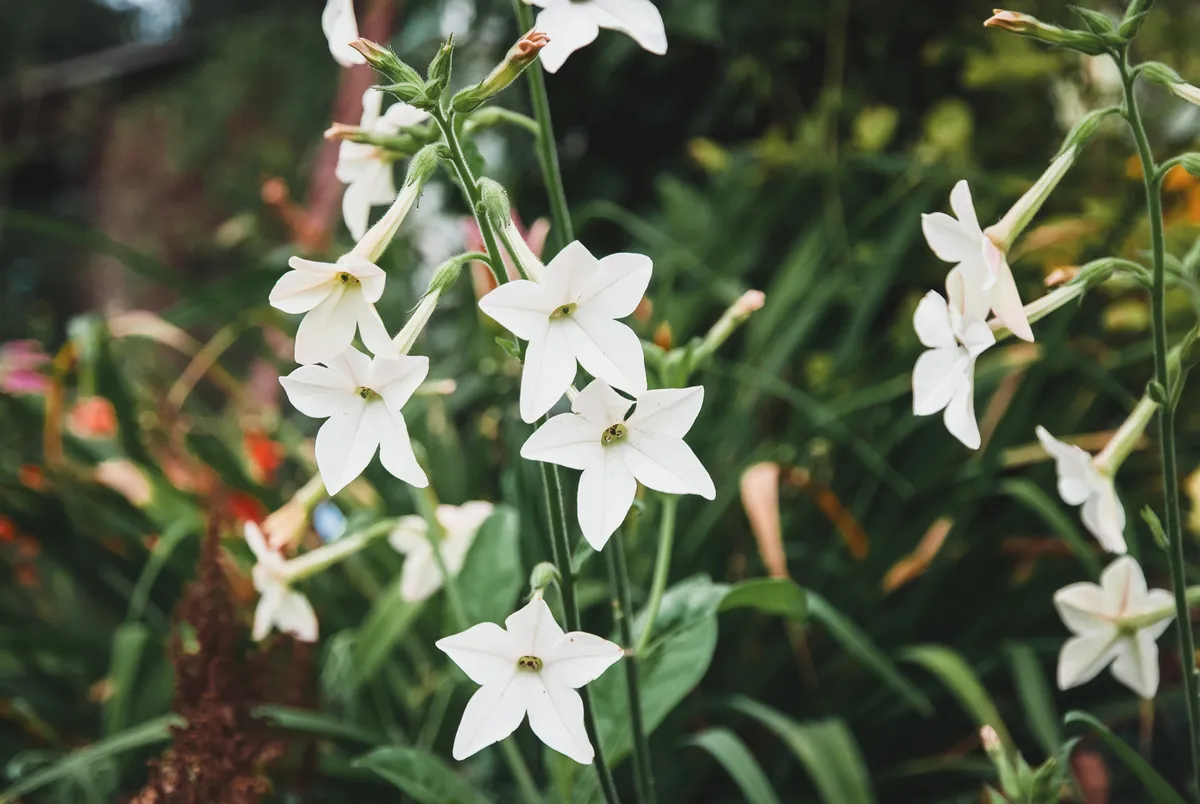
Not all moths drink nectar, but night-scented flowers will attract those that do. Grow species with short tubes, such as Nicotiana alata rather than N. sylvestris.
Sweet rocket (Hesperis matronalis)
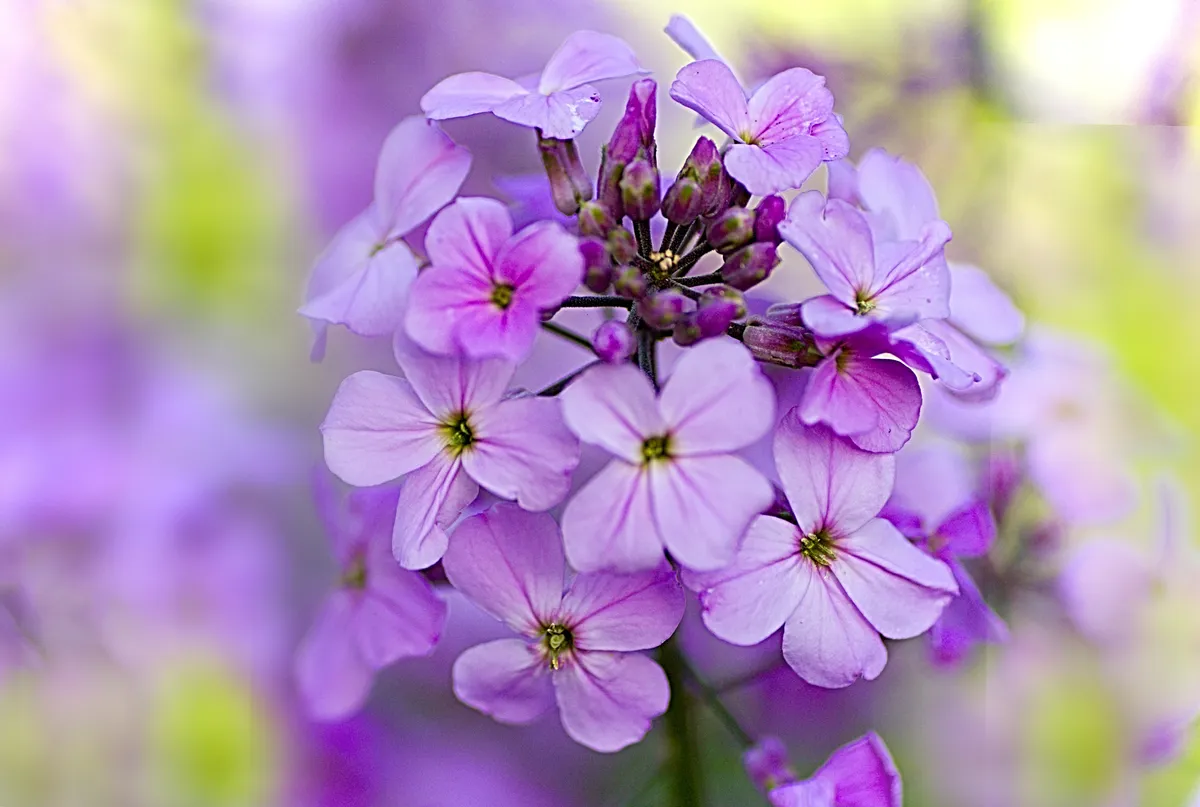
With a sweet yet spicy scent, this is a mid-height cottage garden favourite that self-seeds easily. Flowers vary between white, mauve and purple.
Catmint (Nepeta)
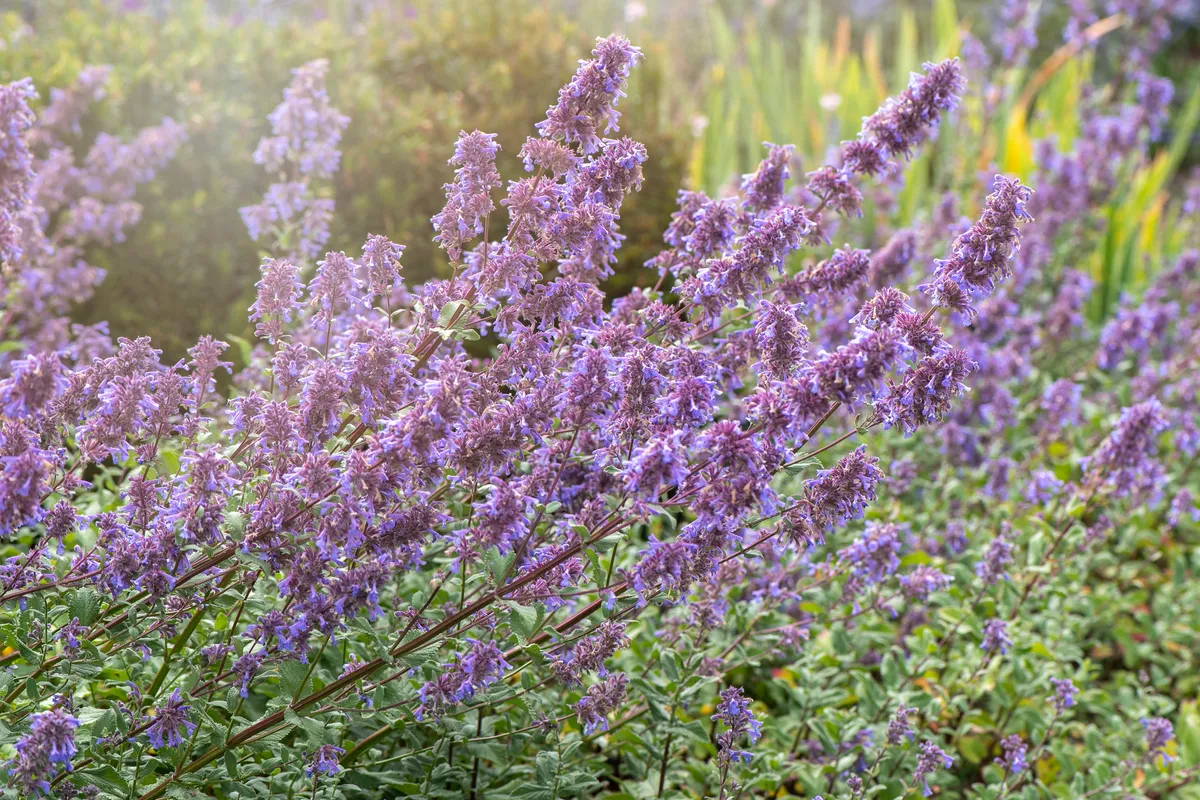
This large catmint flowers from July to October and is a magnet for bees, hoverflies and day-flying moths, such as silver Y.
White rosebay willowherb (Chamaenerion angustifolium ‘Album’)
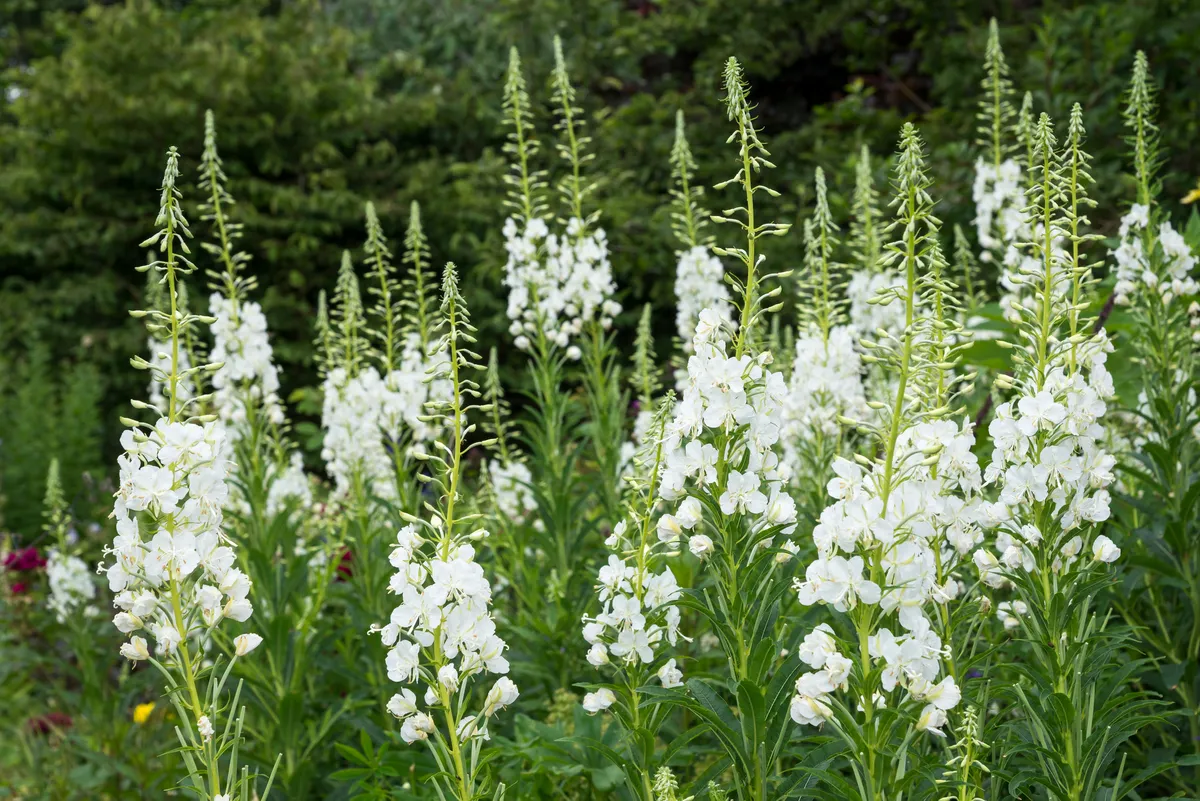
Though it is invasive, you can grow white rosemary willowherb as a food plant for elephant hawk-moth caterpillars. Stately and serene, it has waving tall white plumes.
Buddleia (Buddleja davidii)
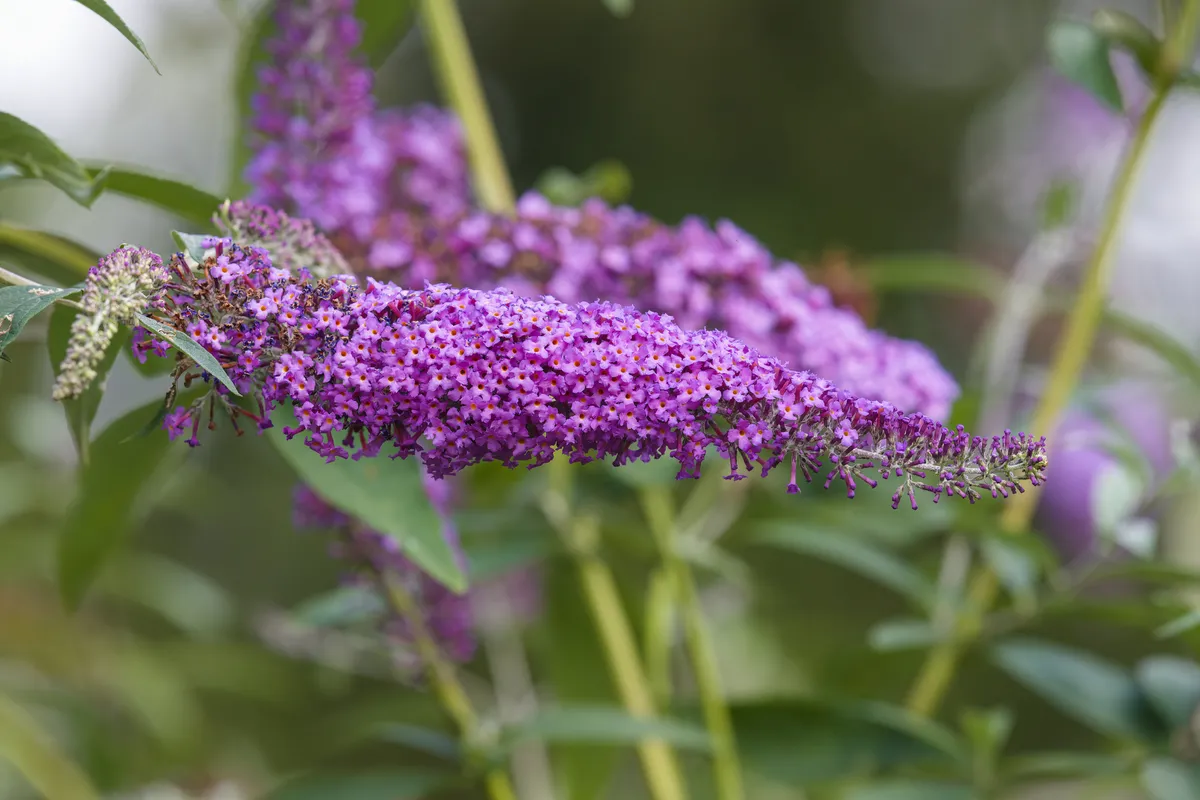
Also called the butterfly bush, buddleja produces an abundance of nectar-rich flowers that butterflies and moths find irresistible.
Wallflower (Erysimum cultivars)
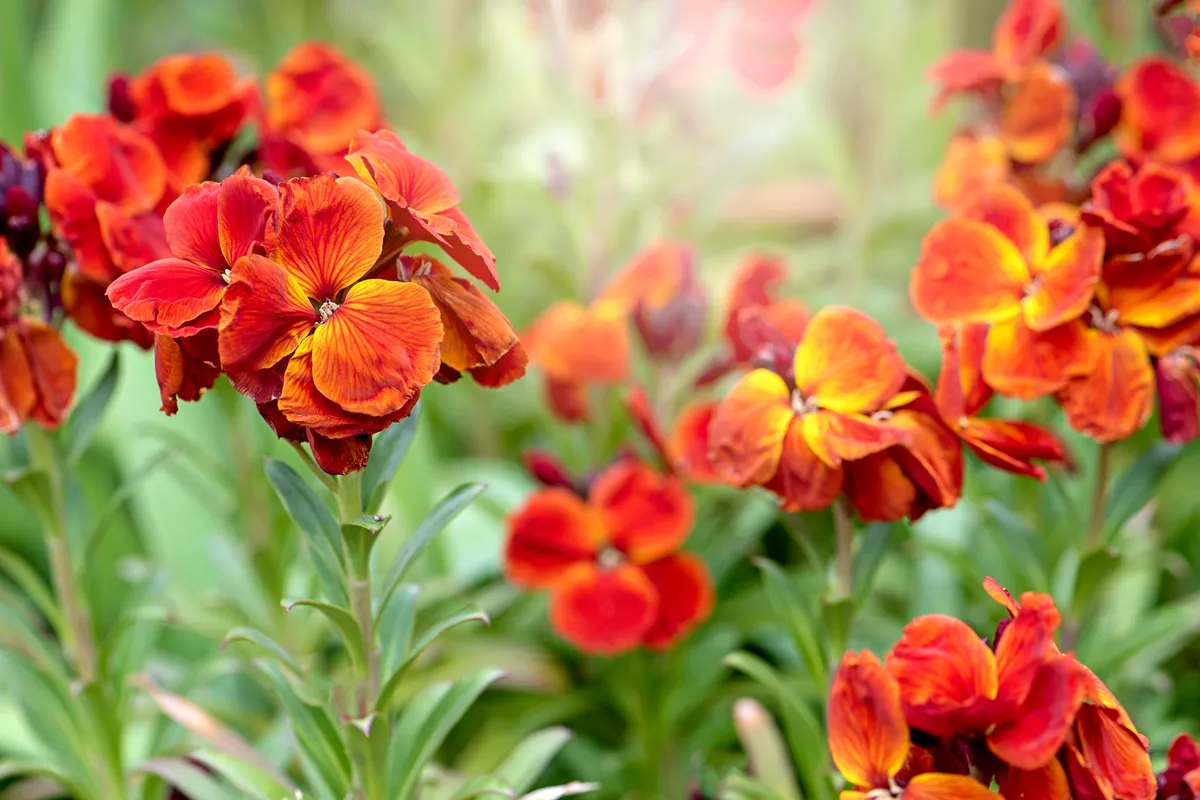
Richly scented spring bedding, wallflowers provide early season nectar along with bluebells. Perennial wallflower ‘Bowles’ Mauve’ attracts hummingbird hawk-moths.
Honeysuckle (Lonicera)
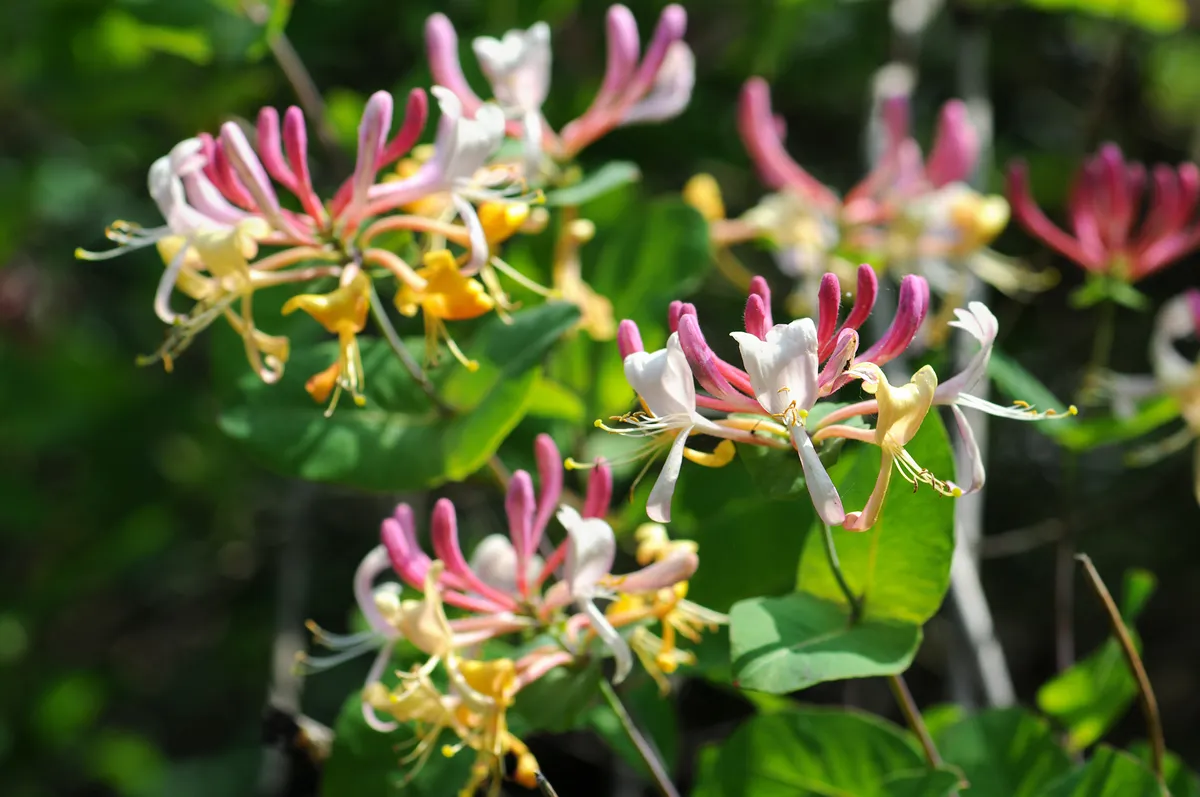
Moths with long probosces can feed on nectar deep in the tubular flowers of honeysuckle. Leaves are food for caterpillars of the early grey and twenty-plume moth.
Knapweed (Centaurea nigra)

Adult moths take nectar from both native and non-native plants but caterpillars need natives. Meadow flower knapweed is the larval food-plant of several species.
Marjoram (Origanum vulgare)
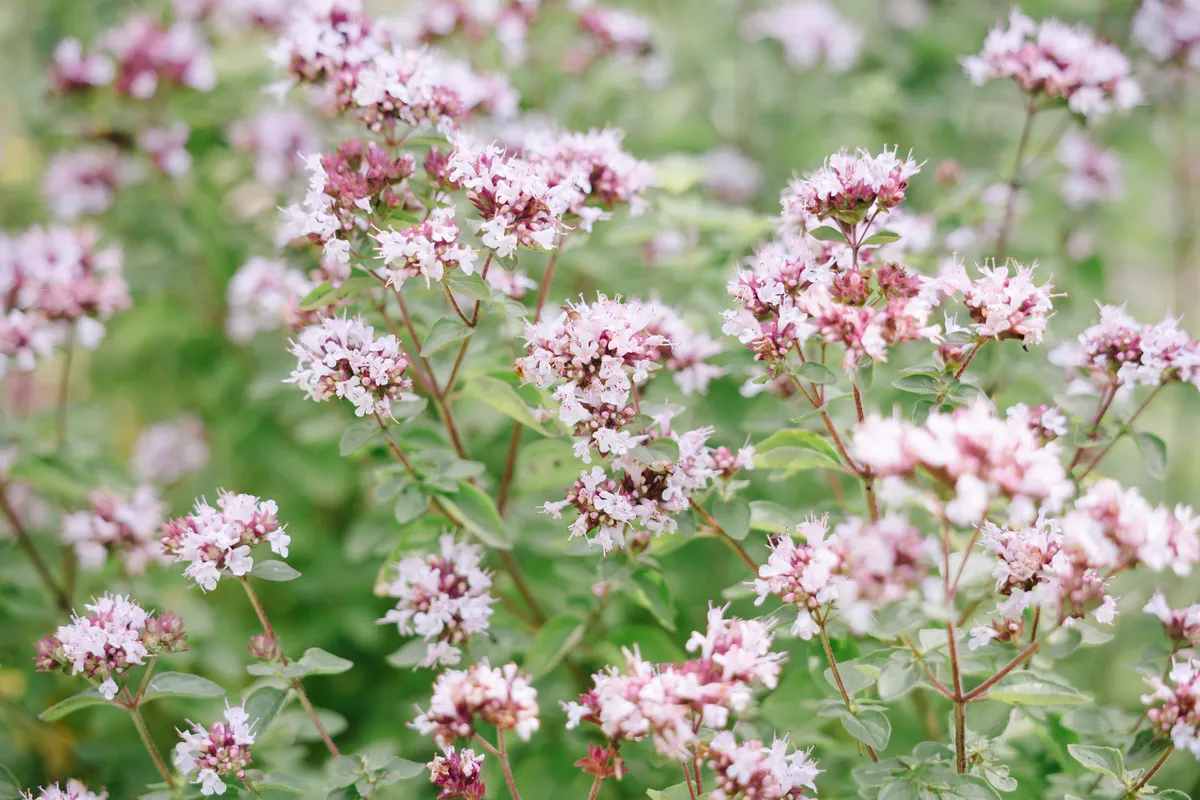
Purple and scented, marjoram flowers provide nectar for many insects, including moths. It’s the larval food-plant of the beautiful metallic-sheened burnished brass moth.
How to make a moth trap
Trapping moths does not hurt them and you can let them go the following night. It’s similar to bird surveying with a mist net: catch without harming, identify and release. There are several types of trap but one of the best is a Robinson.
Moths are drawn by the light of a bright bulb and funnelled down into the large black tub below. You can this with egg cartons so there are plenty of places to hide, setting the trap just before dusk and turning the light off at dawn. It’s a race to get there before the robin who might take advantage of an easy meal.
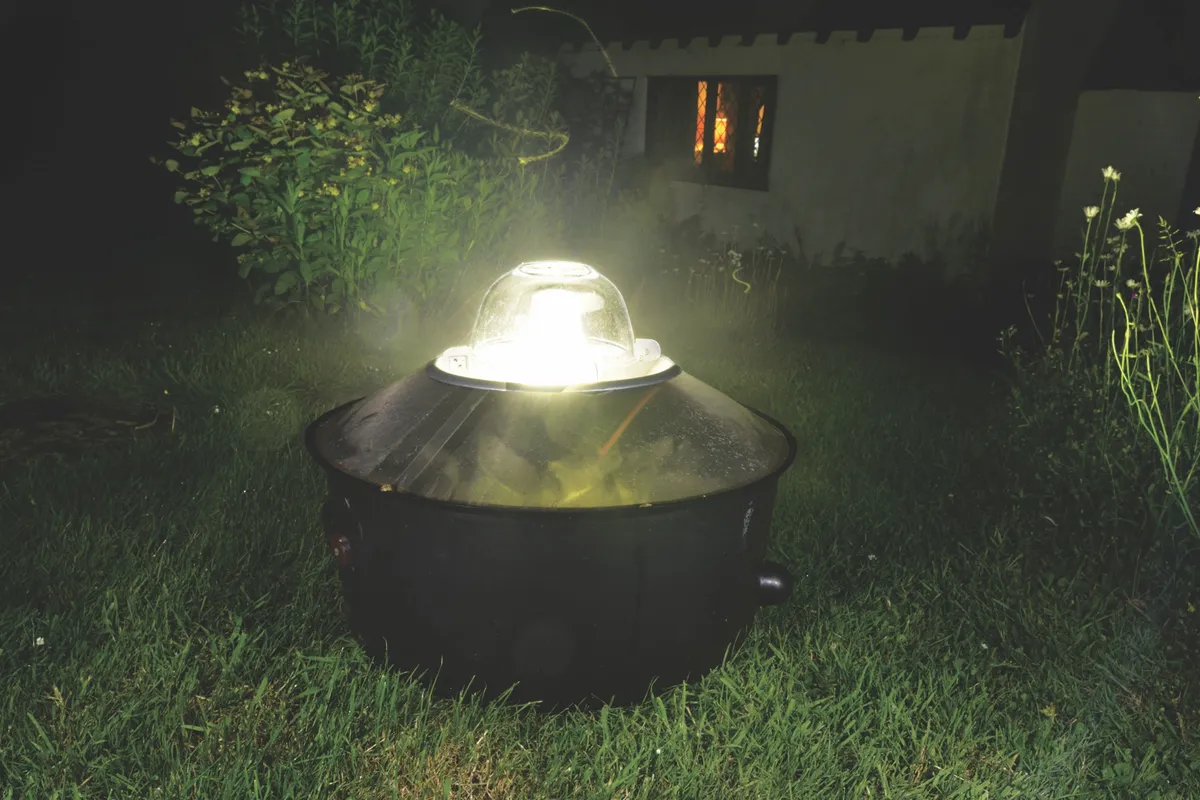
Discover night-flying moths by simply leaving the outside light on or by making a sugary bait.
There’s a guide to moth traps in the Moth Recorders Handbook, downloadable from Butterfly Conservation mothscount.org, and Paul J Palmer has written a book How to Build Your Own Moth Trap (CreateSpace, £6.80).
Anglian Lepidopteris Supplies (angleps.com) sells a range of equipment for moth trapping; traps also available from Watkins & Doncaster (watdon.co.uk). The Field Guide to the Moths of Great Britain and Ireland by Waring, Townsend and Lewington (Bloomsbury, £40) shows moths in resting positions. For supportive sharing, go to Facebook @GardenMothScheme, and there are some good county websites, such as northumberlandmoths.org.uk.
Should I worry about moths in the house?
It's well known that moths are attracted to light. The saying "like a moth to a flame" is used to describe irresistible attraction in humans. Therefore, especially in spring and summer when moths are most active, these little night-time fliers will find their way in through open windows and flap and bat themselves around lightbulbs and lampshades. It can be distressing to watch moths in this state so if you can capture it in a net or under a glass and then remove it safely outside, that is the best option.
If moths frequently enter your house, it's best to close windows when the lights are on inside.
Why do moths eat clothes?
Unfortunately, woollen and cotton clothing and even natural fibre carpets can be a very tempting food source for the case-bearing cloths moth Tinea pellionella. This silvery dart-shaped moth can often be found fluttering weakly in wardrobes and room corners but it is the moth larvae – tiny caterpillars – that will happily devour natural fibres as they grow.
How to get rid of carpet moths
Washing your clothes at a higher temperature and then popping them in a freezer to kill the eggs can help. Moths dislike strong scents so for a natural deterrent, try hanging or placing homemade dried lavender pillows in your drawer or wardrobe. Cleaning and vacuuming regularly is another way to keep moth infestations at bay.









